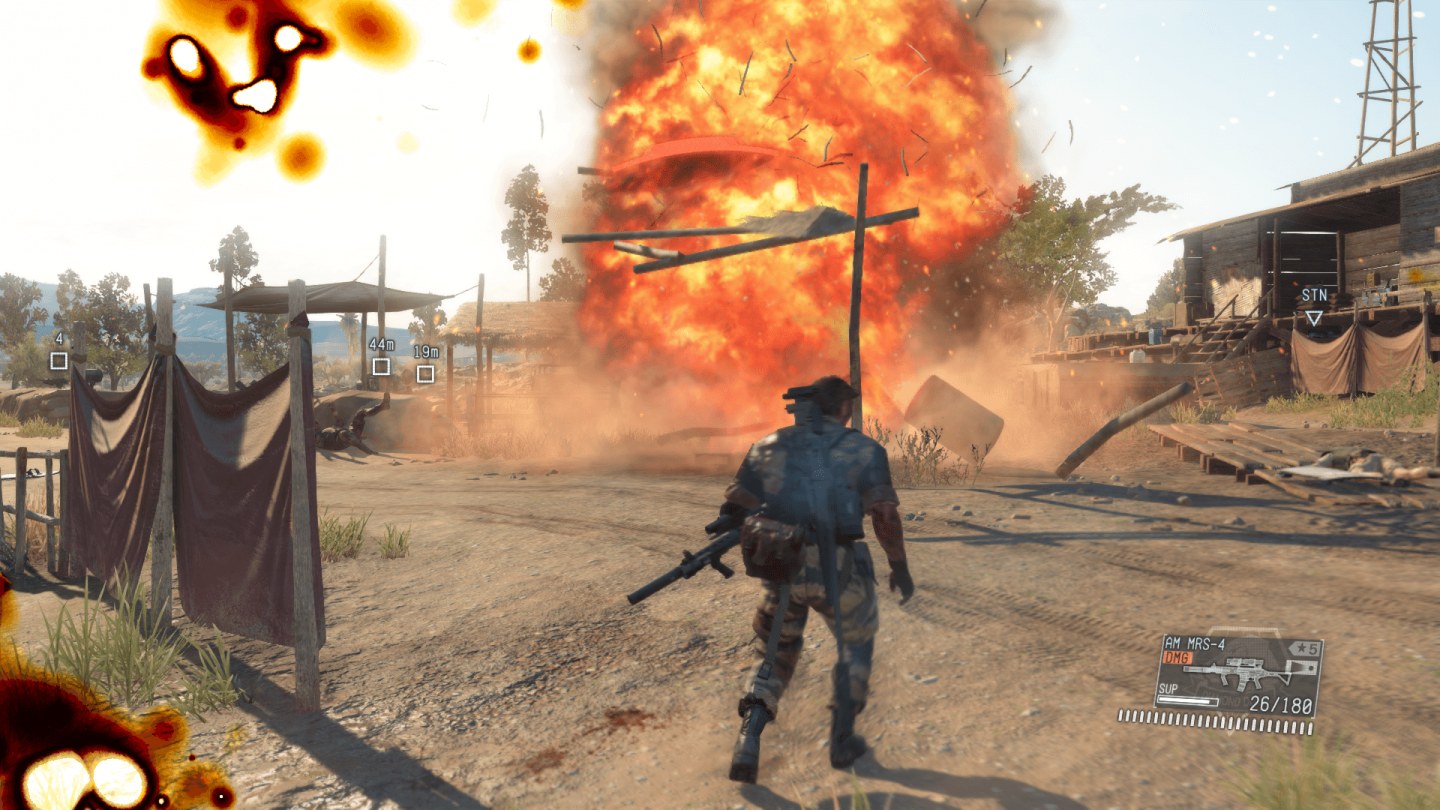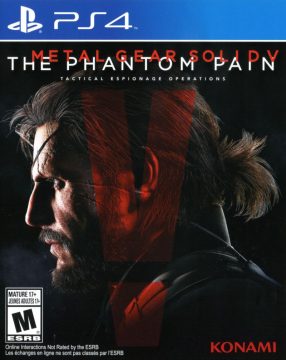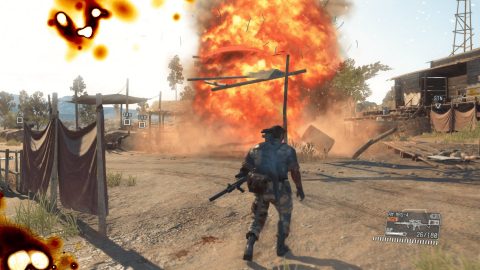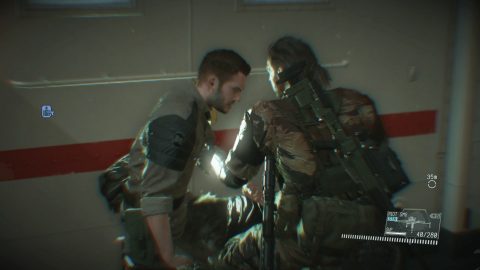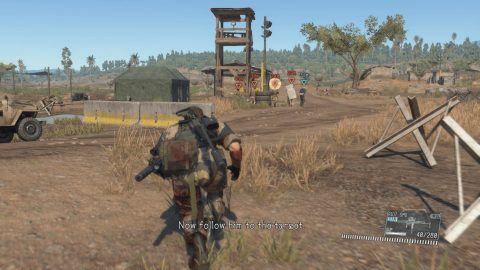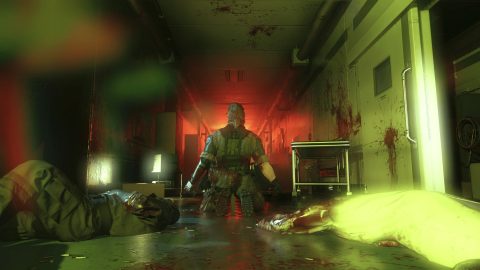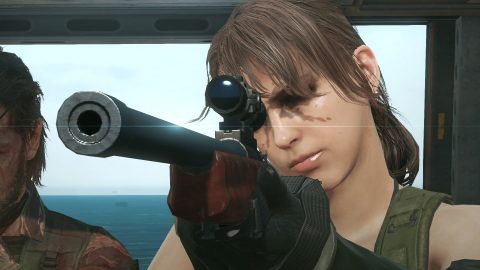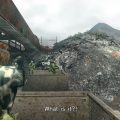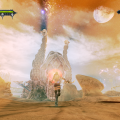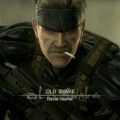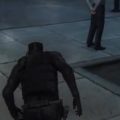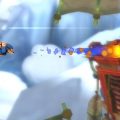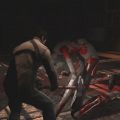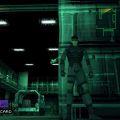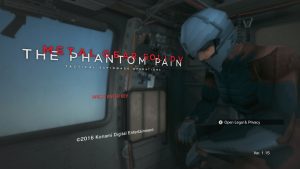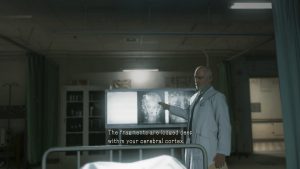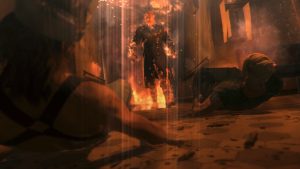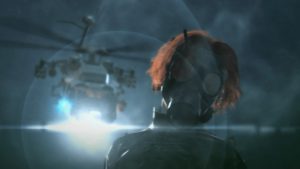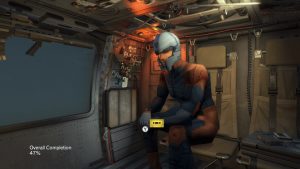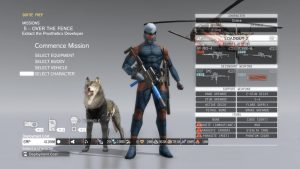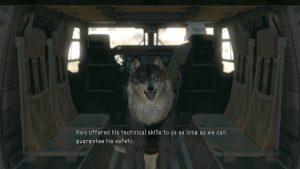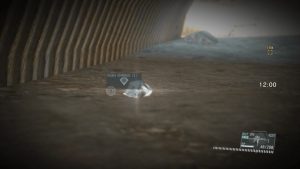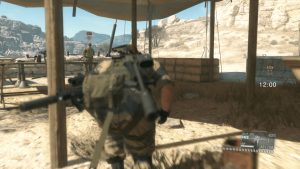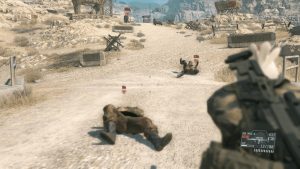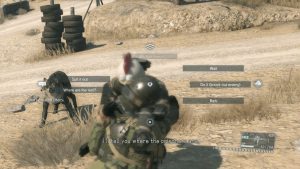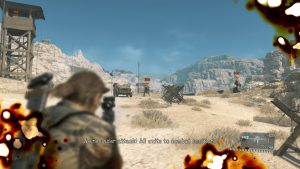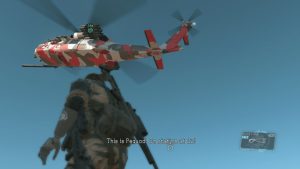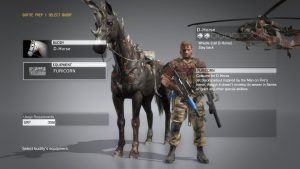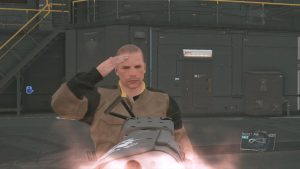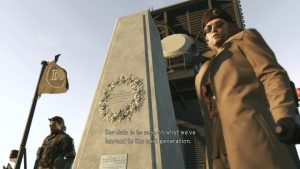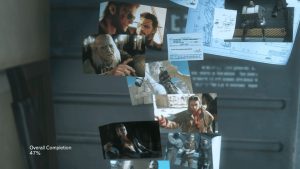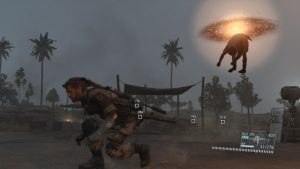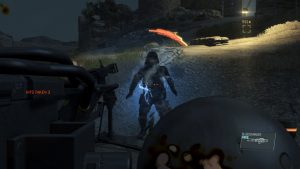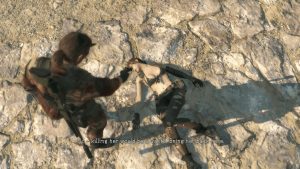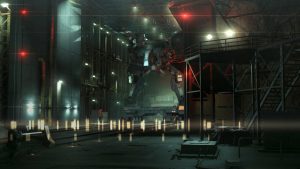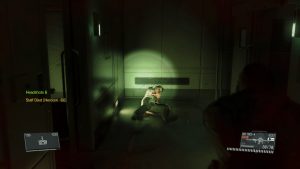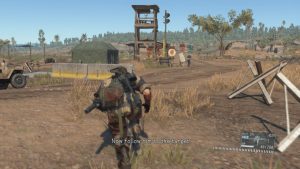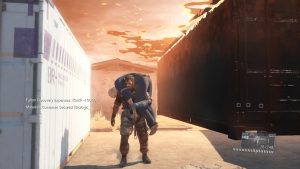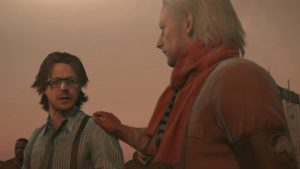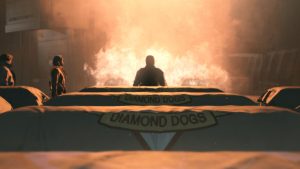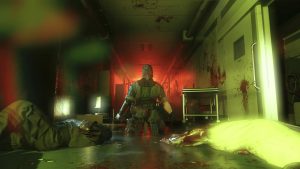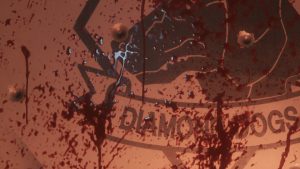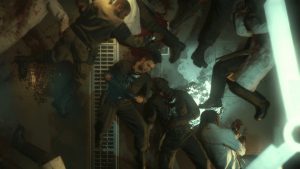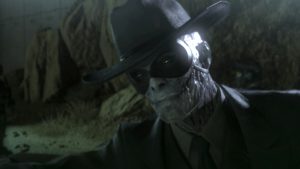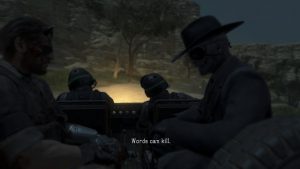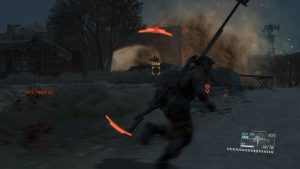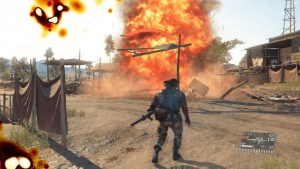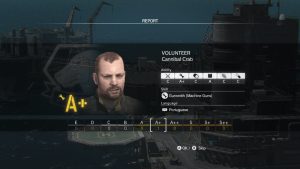- Metal Gear
- Snake’s Revenge
- Metal Gear 2: Solid Snake
- Metal Gear Solid
- Metal Gear Solid Integral Staff Commentary
- Metal Gear Solid (Game Boy Color)
- Metal Gear Solid 2: Sons of Liberty
- Document of Metal Gear Solid 2, The
- Metal Gear Solid: The Twin Snakes
- Metal Gear Solid 3: Snake Eater
- Metal Gear Solid 4: Guns of the Patriots
- Metal Gear Solid: Portable Ops
- Metal Gear Solid: Peace Walker
- Metal Gear Solid V: Ground Zeroes
- Metal Gear Solid V: The Phantom Pain
- Metal Gear Rising: Revengeance
- Metal Gear Touch
- Metal Gear Acid
- Metal Gear Acid 2
- Metal Gear Solid Mobile
The Phantom Pain is the main feature to Ground Zeroes’ prologue. It is a much, much larger game than what was teased by the time it arrived in Fall 2015. The game was driven by creative and technological prowess, with a design that embraced the open world aesthetic more fully than its prologue. However, its developers were too ambitious in creating it, to say nothing of development difficulties arising during its production. Things became so contentious that it was the last game Kojima Productions worked for Konami. The Phantom Pain has its strengths and weaknesses, but as its name implies, it can’t escape the shadow of what isn’t there anymore.
Almost a decade after the destruction of Mother Base in Ground Zeroes, Big Boss wakes up out of a coma in a hospital in Cyprus in 1984, heavily bandaged, full of shrapnel, and missing his left arm. After being saved from assassination by a heavily bandaged man the next bed over, he is picked up by his old acquaintance, Revolver Ocelot, and he reunites with Kaz, now missing some limbs of his own. Together, they rebuild their mercenary army and christen them Diamond Dogs. With this new army and a new base of operations, Snake sets out to take revenge for the events of 9 years ago and unravels Skull Face’s plan across two continents, Afghanistan in Asia and an unnamed country in Africa. Along the way he meets new faces, like Quiet, a scantily clad sniper; Code Talker, linguistic expert; and Eli, a 12 year old with his own army of child soldiers.
The narrative’s got some issues, the first of which involves yet another recasted character. Troy Baker takes up the role of Revolver Ocelot. He brings the same professionalism he’s known for to the role, but this Ocelot feels like a different character, more generic and restrained, rather than the over-the-top double-crossing maverick he’s known for being. Kiefer Sutherland as Snake is jarring, but he still feels like Snake. For such an integral, colorful role, it’s frustrating to see it get swept up in poor casting.
A lot of emphasis in pre-release marketing was placed on Quiet, played by Stefanie Joosten, with Kojima himself tweeting on record that the reason she’s basically naked would make people feel “ashamed for (their) words and deeds.” But like in Metal Gear Solid 4, the game’s words & deeds emphasize her body. When captured, she is put into a cell, where she takes showers as the camera lingers at fetish angles. After cleared for active duty, she lounges around in provocative poses on the helicopter between missions. This is to the game’s detriment, because she is a more interesting character than any of the Beauty & Beast Squad. Her boss fight is a simpler, tighter focused riff on the sniper dual in Metal Gear Solid 3, and she’s the most useful companion to take on missions. She had potential but as the series has proved multiple times with its female characters, that potential gets buried under the sexism.
And of course, it’s an open secret that the game left a lot on the cutting room floor. Snake fights Metal Gear, the lengthy introduction sequence is replayed with a new cutscene, and then the story just…ends. There’s plenty of threads left unresolved that either get relegated to briefing tapes or forgotten entirely. The game comprises of only 2 chapters, with the remnants of a third one existing on the disc, so there clearly was intent to do more. Some of the more effective moments in the story get overshadowed by this lack of closure.
The game plays as fabulously as Ground Zeroes, carrying over the same mechanics, but with the expanded open world of its two settings. More weapons are found in the field or built back at Mother Base. Fulton recovery makes a comeback here, with an expanded use. Not only can players nab humans out of the field, but also resources, animals, and others. Different support characters can accompany Snake on missions, offering unique advantages. D-Dog is a good doggo rescued by Snake in the field. He can take out enemies with a knife in his mouth. D-Horse allows Snake to get around the different maps at a gallop. Quiet offers her expert sniper skills. A robot, D-Walker, looking like a bigger sized Metal Gear Mk. II, gives Snake some extra mobility and defense options. Each story mission begins and ends with credits of those who worked on the scenario, lending them a TV-like feel.
Base management returns in The Phantom Pain, expanded and overhauled. Instead of just being a static menu, the base can now be explored. Players can wash off the battle grime from Snake with a shower, annoy their recruits with his rocket arm, and change small cosmetic things like the color and symbol used on the base. The base, like in Peace Walker, is out in the middle of the open ocean, looking even more like the Big Shell from Metal Gear Solid 2. Recruitment and resources feeds into the base management, just like before, and players can do deeper, participating in the ambient online component. They can build Forward Operating Bases, which produce income and resources, but are vulnerable to other player’s attacks.
It wouldn’t be a Metal Gear game without some silliness. Snake can get so dirty that he’ll attract flies and upon returning to base, soldiers douse him with water. The Fulton system can be upgraded to a wormhole, because why not? There are more unlockable skins, such as turning your horse into a ridiculous demon horse or making Snake look 32-bit as Gray Fox. Using the iDroid interface, players can collect and play different licensed tracks – or their own music on PC – so you can start missions blasting Wagner’s ‘Flight of the Valkyries’ from a helicopter, for that ‘Apocalypse Now’ energy. R&D can develop a rocket arm that players can guide right into the faces of their enemies. There’s a mission to extract Hideo Kojima from yet another dangerous situation. Play poorly enough and the game will offer a chicken hat, which makes you harder to see, gives you extra chances when you get caught, and docks your score, or a little chick hat, which makes you invisible and set your score to 0.
Despite the fun that can be had, The Phantom Pain is a massive game, to its detriment. Both Afghanistan and the unnamed African nation individually are much larger than any other environment in the series before, and there is a lot to see and do. Yet, no single story mission feels as dense, dynamic, or engaging as Ground Zeroes does with its primary one. The base management is much more involved than in Peace Walker and the grind is real. Replaying missions or exploring the open world is less about experimentation and improvisation, and more about tracking down resources or soldiers to fill out the base some more. This grind feels motivated toward fostering FOMO & impatience to sell microtransactions, instead of anything actually unique or engaging. This is further exacerbated by the repetition in the back half of the game and the abrupt end doesn’t help either.
The FOX Engine continues to impress visually and aurally in The Phantom Pain. It shines in the transition between different weather, the way the fog will set in on Mother Base, sandstorms obscuring yours & the enemies’ sights, or the fall of night on the African plains. The two different settings are nominally different from each other – Afghanistan is more mountainous than the wider opened expanse of the savanna – but they tend to blend together during its long runtime. Music is handled by Ludwig Forsell alone this time, and he continues the same stellar backing heard in Ground Zeroes. Like its prologue, the game straddled two different console generations, with the PS3 & Xbox 360 versions looking a little bit more rough and performing worse than Ground Zeroes, showing the strain that a full open world setting was taking on those systems.
Before the release of The Phantom Pain, Kojima Productions and Konami had a messy falling out. Konami restructured its development studios again in spring 2015, with Kojima’s name quietly being dropped from its list of executives. Anonymous reports of a strained relationship emerged near the end of the development cycle, with others like Donna Burke and Akio Otsuka chiming in that the studio had been shuttered. While Kojima Productions were nominated as ‘Developer of the Year’ at The Game Awards the same year, anyone from the studio – including Kojima himself – was contractually prevented from accepting the award, had they won. Kojima Productions reformed shortly thereafter, and their first game, Death Stranding, released four years later, getting an updated edition in 2021. While Metal Gear wasn’t done – it would Survive for better or worse – an era was done. The man who created the series was free from that obligation for the first time in nearly three decades, followed by many of the folks who helped make the series what it today.
Metal Gear began as a game born out of one person’s challenges working with the MSX and his love of cinema, and this last game he worked on was full of all the same messy & fantastic hallmarks the series had come to be known for. Its games pushed the technical limits of video games to new heights. Its inventive, clever design delighted in playing with expectations. It challenged conventions with its pseudo-scientific, intricate, and wild narratives. But what makes the series endure isn’t just its tech or its mechanics or its story; it’s the characters. More than anything else, the eclectic personalities it spawned & their fluid, screwy allegiances are its greatest meme. It’s where the series has thrived and where it has also failed. Everybody knows who you are imitating, when you repeat a noun verbatim with that gravelly, vaguely questioning tone of voice. In an industry that feels hellbent on soulless, rotten exploitation, Metal Gear is human, at least.
